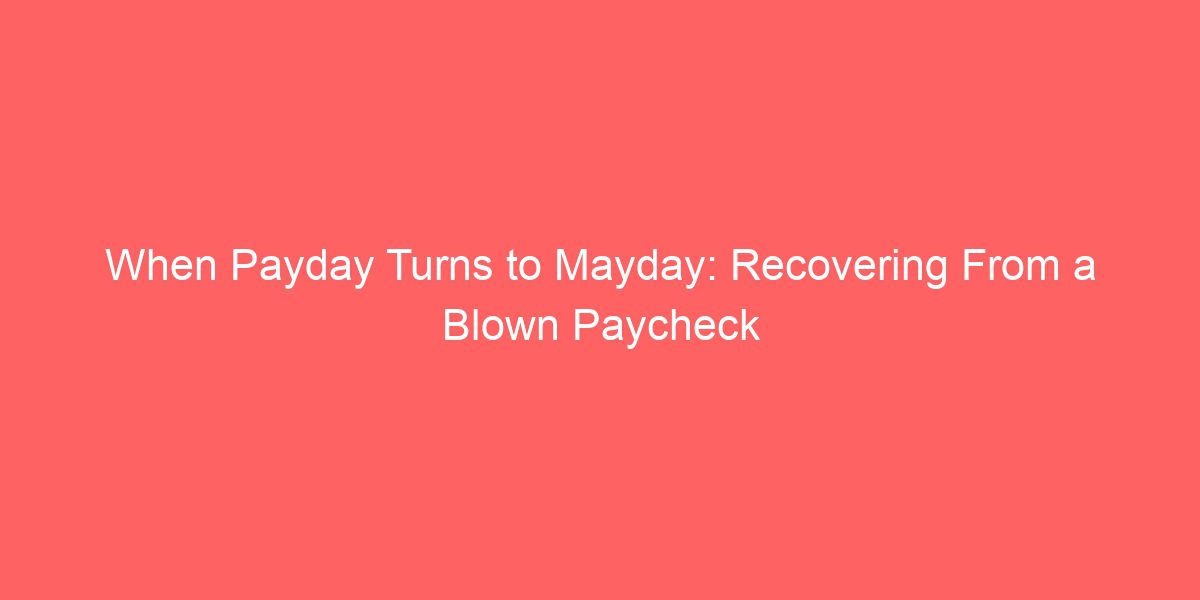You just enjoyed a lovely payday, but, much to your chagrin, the bills roll in and the money rolls out, leaving you feeling less like a hardworking breadwinner and more like an unwitting passenger in an F1 car – all speed, no brakes. You’re not alone – in fact, many of us have suffered a financial wipeout at least once. But how do you right the ship? As daunting as it may seem, regaining control of your financial vehicle is achievable, and it all pivots on smart, actionable decisions. Tips from finance experts go a long way. Dive in!
Shift Gears: Start With a Budget Reset
Steering your financial life back to stability begins with a reassessment of your spending. Finance guru Dave Ramsey calls this mindset “zero-based budgeting”, where every dollar has a purpose, and misallocation becomes a thing of the past. List your expenses, from most important to least, and trim the fat where possible. Bye-bye breakfast burritos!
Navigate Your Way: Audit and Allocate
Adrift in a sea of bills? Auditing your outgoing payments can be a lifesaver. Look for bills you can minimize or even eliminate – do you really need that monthly magazine subscription? Then, take control of allocation. Allocate funds for fixed, variable, and occasional expenses and stick to it. It might be a bitter pill to swallow but every great journey needs a planned route.
Step on the Brake: Curb Impulsive Spending
Financial psychologist Dr. Brad Klontz preemptively counters impulsive spending by recognizing and labeling it. Are you a retail therapy addict? label it, assess why you do it, and find healthier, cheaper outlets for those feelings. You’ll be surprised how quickly those savings add up.
Pit Stop: Build an Emergency Fund
Finance expert Suze Orman advocates for a bulwark against life’s little surprises – an emergency fund. Life is fraught with financial speed bumps – car repairs, unforeseen medical expenses, or job loss. An emergency fund fosters peace of mind, reduces stress, and breaks the paycheck-to-paycheck cycle. Start small, aim for three to six months of living expenses for your fund and gradually build it over time. The journey back to financial stability is a marathon, not a sprint.
So, What Now?
The harsh truth? Financial recovery is not easy, but it’s a journey worth taking. With careful budgeting, a detailed allocation strategy, mindful spending, and a healthy emergency fund, you can steer your financial vehicle back onto solid ground. And remember – bills are inevitable, but a bill-related panic attack doesn’t have to be.
Frequently Asked Questions:
How do I start a ‘zero-based budget’?
Begin by listing your monthly income. Then tally up all your expenses, from rent to the coffee guilt-trip purchase. Ensure every dollar is assigned to a category, even if it’s going into savings. The goal is to ensure income minus expenses equals zero.
What are some ways to stifle impulsive buying?
One effective method is to implement a ‘cooling-off’ period; delay the purchase by a day or week and revisit your choice. More often than not, the urge will dissipate. Alternately, try unsubscribing from marketing emails that lure you into spontaneous shopping.
How can I build an emergency fund with little to spare?
Start small; the goal is consistency. Dedicate a small amount, say $20, every month towards your emergency account. As your financial state recovers, increase this gradually. Remember, it’s not about how quickly you can fill the fund, but ensuring it’s consistently growing.

